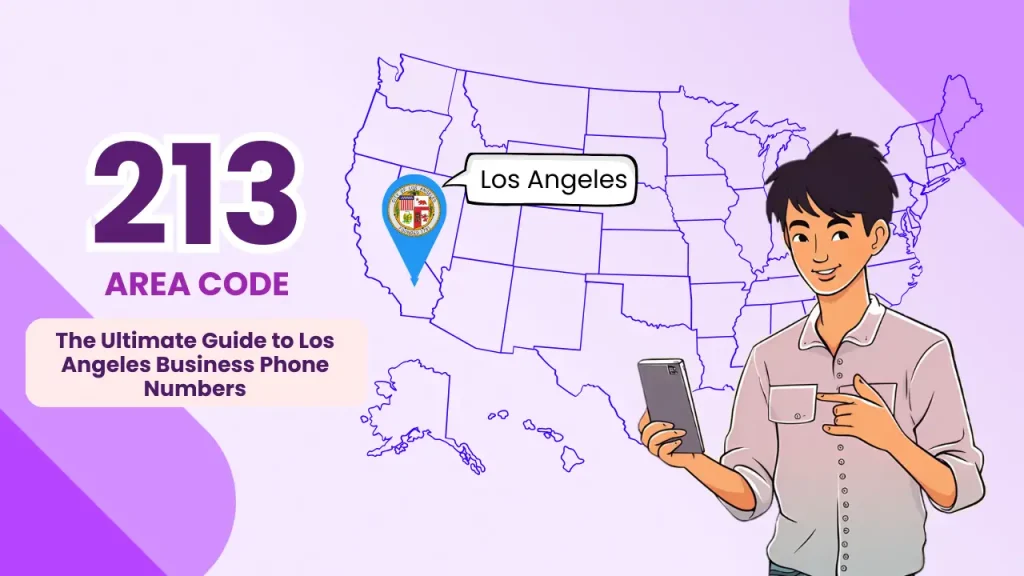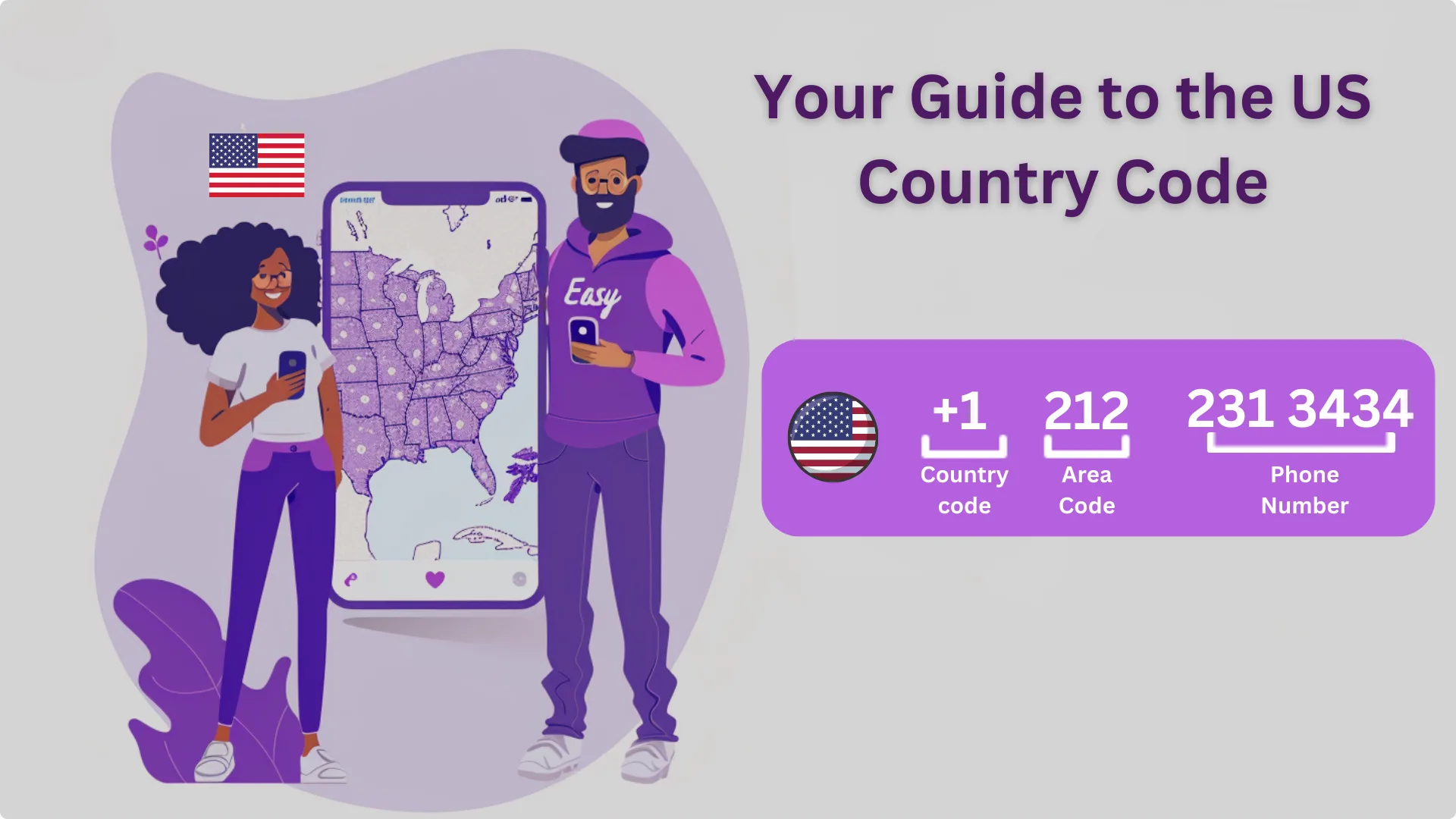The 213 area code is synonymous with the heart of Los Angeles, covering the lively downtown district and its neighboring areas, and is a popular business phone number for companies looking to extend their reach into the state of California.
Established as one of California’s original area codes, it reflects the vibrant urban culture and diverse population of the region.
We will explore the history and significance of the 213 region code, its economic landscape, the advantages it offers businesses, and how enterprises can obtain this coveted code.
Join us to uncover the essence of this iconic area!
Key Takeaways:
- The 213 area code covers downtown LA and its surrounding areas, making it a prime location for businesses to reach a diverse population.
- With a vibrant economy and diverse industries, the 213 prefix offers businesses a thriving market to tap into and access to a wide range of job opportunities.
- Having a 213 region code can benefit businesses by symbolizing their connection to downtown LA’s bustling urban center, attracting customers from diverse backgrounds, and providing access to a thriving economy.
What Is the 213 Area Code?
The 213 region code is a significant telecommunications identifier that serves central Los Angeles, including downtown and its surrounding neighborhoods in California. Established as one of the original area codes, it reflects the vibrant urban culture of this historic region known affectionately as Tinseltown.
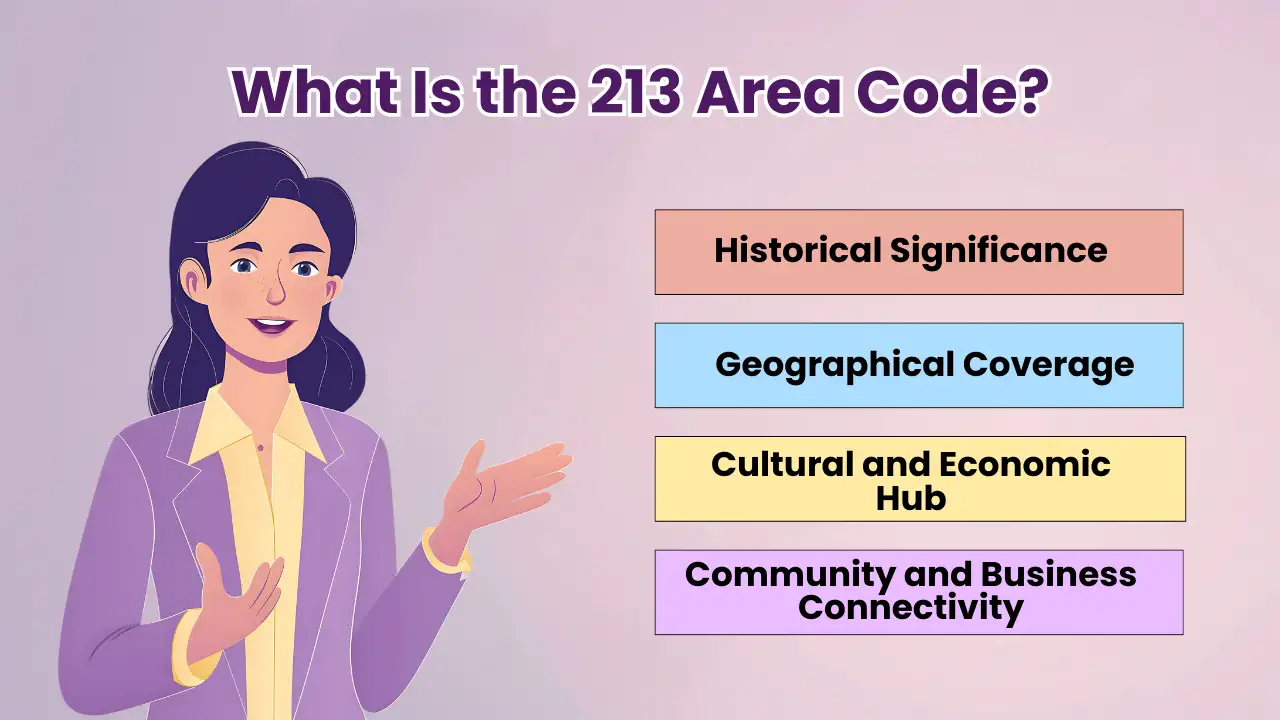
This area code encompasses a diverse population, including business owners, residents, and various enterprises that thrive in the heart of Los Angeles, making it an essential part of the city’s communication landscape.
When Was the 213 Area Code Established?
The 213 number code was established in 1947 as one of the original area codes by the California Public Utilities Commission, marking the beginning of organized telephone numbering in the state.
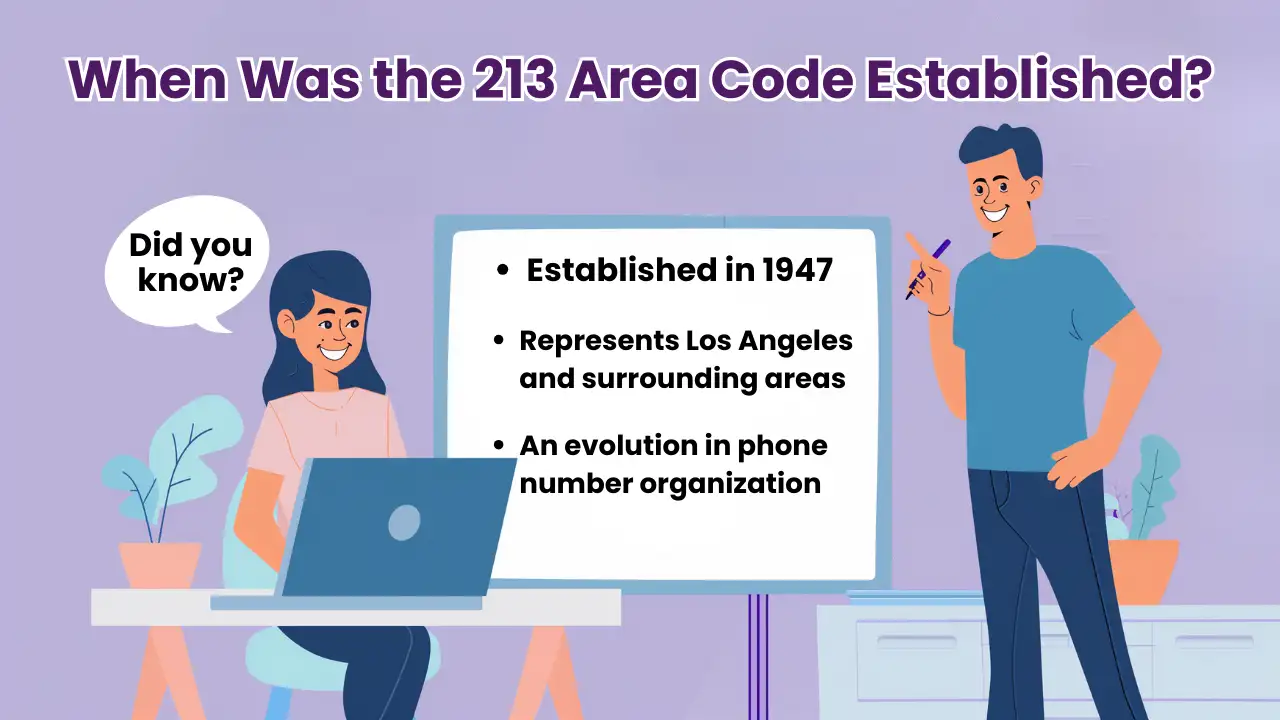
This pioneering effort aimed to streamline communication as the population and demand for telephonic services soared. Initially, 213 served the Los Angeles region, encompassing a vast area within Los Angeles County that would later evolve into one of the most vibrant metropolises in the world.
Over the decades, as the region’s population swelled, several new area codes emerged to manage the explosive growth in demand. Today, 213 continues to hold historical significance, representing a key chapter in California’s telecommunications evolution.
As technology has transformed communication, this area code still prominently features in modern life, reminding residents of the rich history that shaped their connectivity.
- Established in 1947
- Represents Los Angeles and surrounding areas
- An evolution in phone number organization
The legacy of 213 not only reflects a geographical identity but also encapsulates the dynamic changes in communication that continue to influence everyday interactions.
What Areas Does the 213 Area Code Cover?
The 213 region code covers a vibrant range of neighborhoods and surrounding cities, including iconic areas such as downtown Los Angeles, Hollywood, Chinatown, the Fashion District, and the Arts District. Each of these districts contributes to the unique character of the region, showcasing a rich tapestry of culture, commerce, and creativity that defines Los Angeles as a global city.
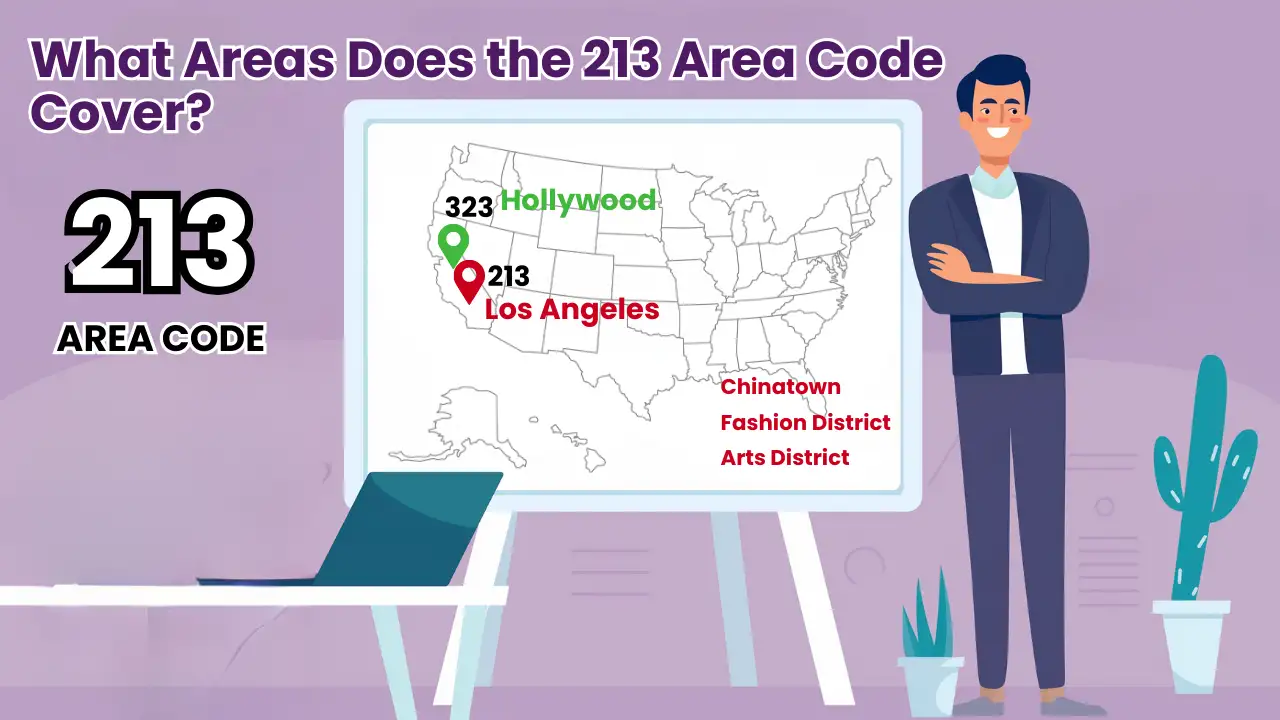
Downtown Los Angeles
Downtown Los Angeles is the bustling heart of the city, characterized by a diverse population and a thriving business landscape that includes various creative industries.
This vibrant area, often referred to as DTLA, holds historical significance as the birthplace of Los Angeles, where early settlers established the city in the 18th century. Today, it stands not only as a business hub but a cultural epicenter, boasting amenities such as world-class restaurants, art galleries, and entertainment venues. The area also benefits from a well-established telephone service, which supports both residents and businesses.
Residents enjoy easy access to public transportation, making commuting a breeze, while tourists are drawn to attractions like the iconic Walt Disney Concert Hall and the bustling Grand Central Market.
- Remarkable historical landmarks
- Innovative new businesses
- Overall community revitalization efforts
As this dynamic area continues to evolve, it attracts a new wave of residents and entrepreneurs, turning it into a thriving ecosystem that celebrates its rich past while paving the way for a bright future.
Surrounding Areas
The surrounding areas of the 213 area code, such as Huntington Park, Montebello, and Florence-Graham, play an essential role in the greater Los Angeles region, contributing significantly to its population and economy. West Hollywood is also part of this vibrant area, covered by the 213 and 323 area codes.
These neighborhoods are bustling with life, offering a unique blend of cultures that enrich the community and enhance its vibrancy. Huntington Park, for instance, features a mix of family-owned businesses and larger retail establishments, catering to a diverse populace.
- demographics: The area is characterized by a predominantly Latino community, which fosters a rich cultural tapestry.
- notable businesses: Local markets and restaurants are popular among both residents and visitors, showcasing authentic cuisine.
- community features: Parks and recreational facilities provide vital green spaces, promoting health and wellness.
Similarly, Montebello’s strong sense of community is evident through its active local events and engagement.
Both neighborhoods seamlessly integrate into the broader economic framework of downtown, supporting initiatives that promote growth and diversity within the region.
What Is the Population of the 213 Area Code?
The population within the 213 region code is a vibrant mix of individuals from diverse backgrounds, reflecting the rich cultural tapestry of Los Angeles. This diversity enhances the area’s appeal for businesses, residents, and visitors alike, making it an ideal location to purchase a local phone number due to its cost-effectiveness and associated benefits.
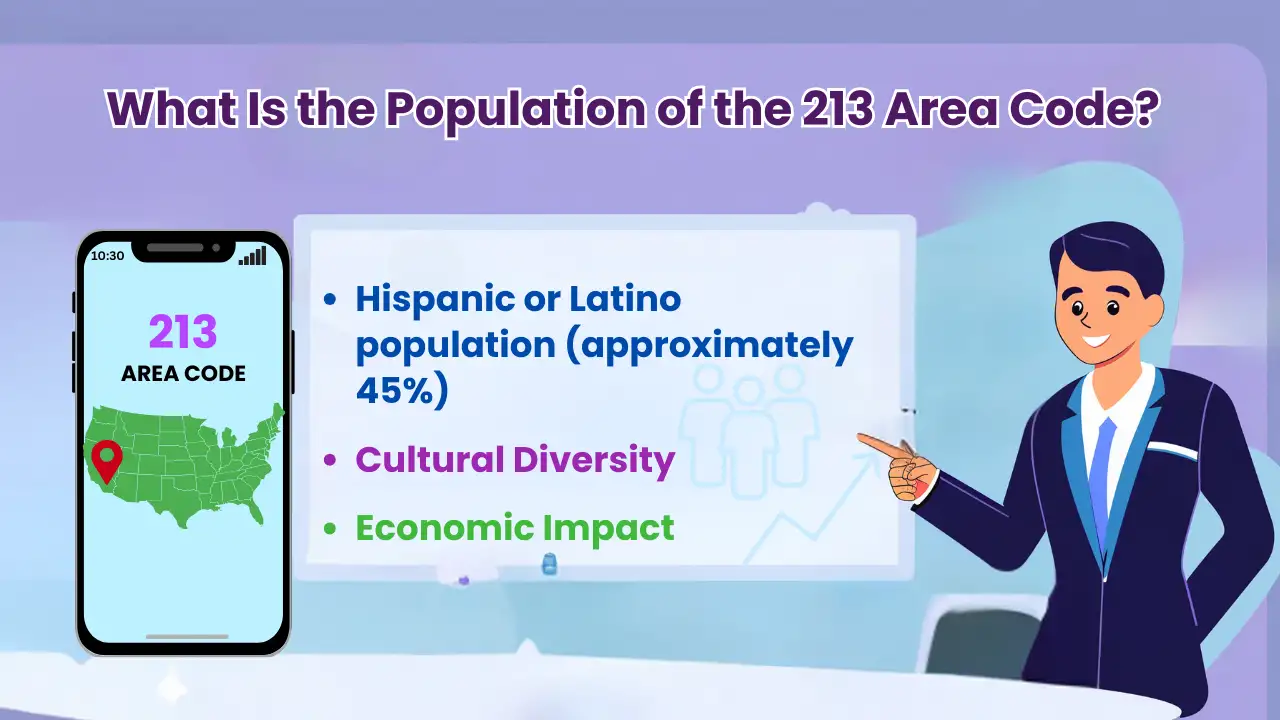
With a substantial number of immigrants contributing to the local culture, the area showcases a variety of languages, culinary styles, and artistic expressions. Specifically, approximately 45% of residents identify as Hispanic or Latino, while a significant portion belongs to Asian and African American communities.
This cultural mosaic not only fosters an enriching environment but also stimulates economic growth, as local businesses cater to a wide array of consumer preferences.
Such demographic diversity creates a unique landscape for social interactions, encouraging collaboration and innovation among entrepreneurs. These characteristics can lead to:
- Increased customer bases for local shops and restaurants.
- Opportunities for cultural festivals that promote community engagement.
- Collaborative initiatives that leverage the varied skills of residents.
In essence, the interplay of diverse identities within the area code 213 not only shapes the community’s dynamics but also enhances its potential for economic development.
What Are the Benefits of Having a 213 Area Code for Businesses?
Having a 213 area code offers numerous benefits for businesses, including the efficient management of telephone numbers, the perception of a local presence, improved customer service capabilities, and access to advanced VoIP features that enhance communication. This local identity fosters trust among customers and can significantly boost a business’s reputation in the bustling Los Angeles market.
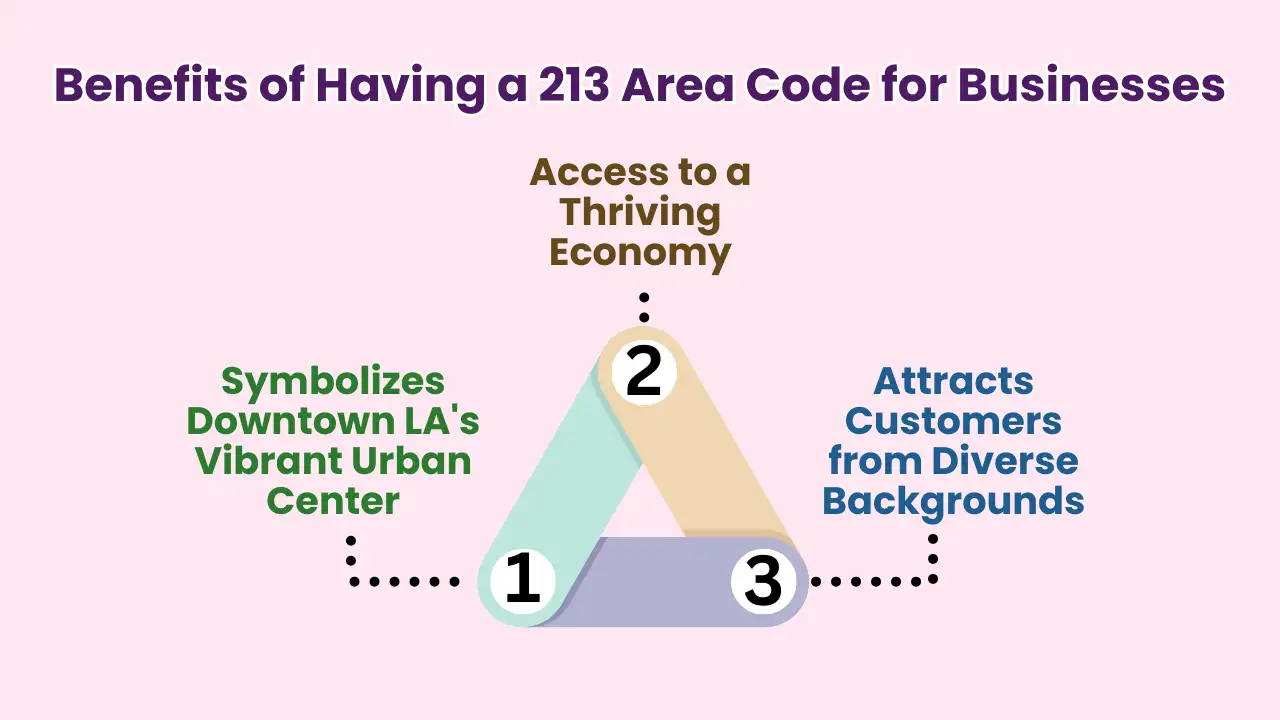
Symbolizes Downtown LA’s Vibrant Urban Center
The 213 prefix symbolizes the vibrant urban center of downtown Los Angeles, offering businesses a recognizable local presence that fosters trust and credibility among potential customers.
This area code not only represents geographical location, but also resonates with the rich culture and dynamism that define the heart of the city. By utilizing the 213 number code, businesses can effectively enhance their marketing strategies, making their services appealing to a local clientele that values community connection.
When customers see a familiar area code, it often evokes a sense of reliability and accessibility. Many consumers prefer to engage with brands that they perceive as rooted in their community.
- This local identity can lead to increased customer loyalty.
- Businesses leveraging local marketing strategies can capitalize on events and business trends unique to downtown LA.
Ultimately, the recognition of the 213 region code as synonymous with local expertise can significantly elevate a brand’s standing in a competitive marketplace.
Attracts Customers from Diverse Backgrounds
The 213 prefix attracts a diverse customer base, allowing businesses to engage with individuals from various backgrounds, which is crucial for building a strong community presence.
This variety fosters a unique environment where businesses can tailor their strategies effectively. By understanding the distinct preferences and values of each demographic, organizations can enhance their marketing approaches.
This not only boosts customer satisfaction, but also strengthens brand loyalty. Companies often find that developing products and services that cater to this varied clientele can lead to significant competitive advantages.
- Engaged customers are more likely to promote a brand via word-of-mouth.
- Diverse marketing campaigns resonate with a larger audience, maximizing reach.
- Community involvement can expand the customer base and create impactful partnerships.
Acknowledging customer diversity can enrich community relationships, establishing businesses as active participants motivated by inclusivity and support for local initiatives.
Access to a Thriving Economy
Access to a thriving economy is another significant benefit of having a 213 number code, providing businesses with numerous opportunities to connect with clients and partners in various sectors.
The dynamic economic environment in this area fosters innovation and collaboration across diverse industries, paving the way for strategic partnerships that can lead to mutual growth. Businesses have the chance to tap into a comprehensive network of local resources and talent, enhancing their operational capabilities.
Organizations that prioritize:
- effective communication
- networking
- relationship-building
are more likely to capitalize on these available opportunities. When firms engage in open dialogues with others in the community, they increase their chances of sharing ideas and insights that can lead to new ventures and initiatives. Ultimately, harnessing the economic potential of the 213 region code necessitates a commitment to nurturing these vital connections.
How Can Businesses Obtain a 213 Area Code?
Businesses looking to obtain a 213 region code can do so through various methods, including contacting phone companies or a telecommunications company to set up a new number or porting an existing number to maintain continuity in communication.
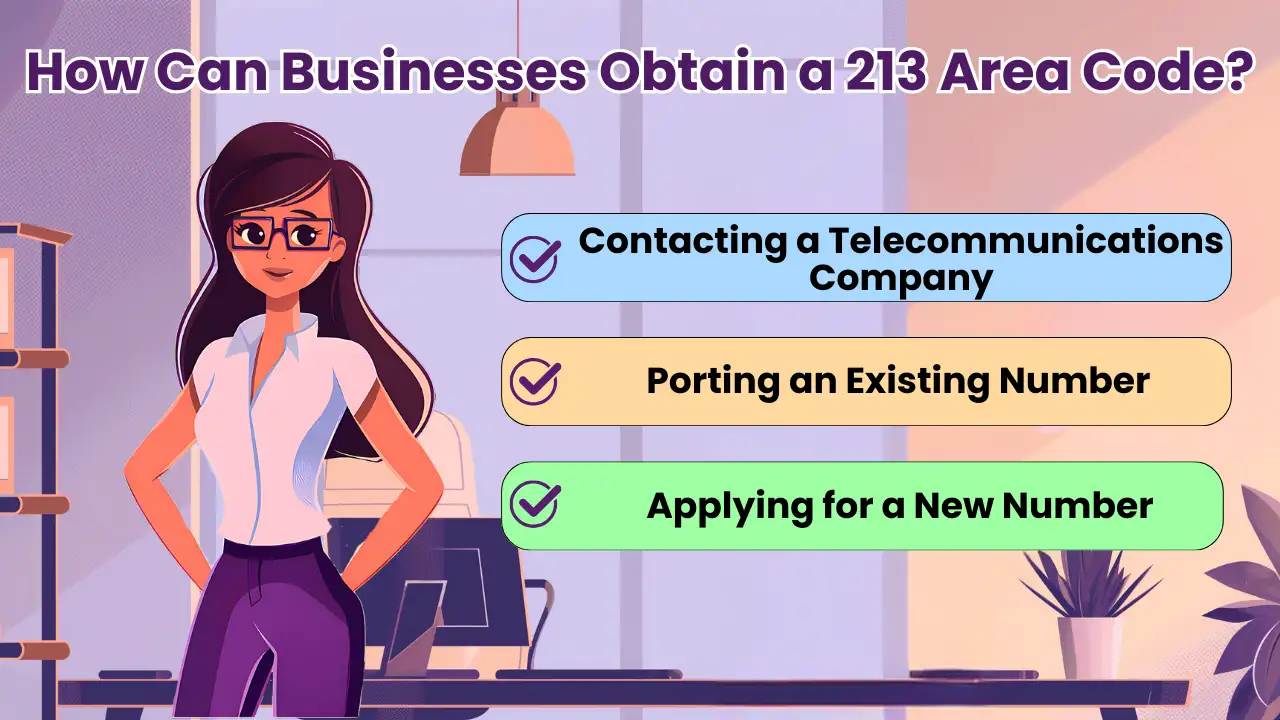
Contacting a Telecommunications Company
To obtain a 213 number code, businesses should start by contacting telephone companies that can provide the necessary services, such as setting up a business phone with a local number. Choosing the right telecommunications provider is crucial for seamless communication and operational efficiency.
When considering which provider to partner with, it’s essential to evaluate the range of services they offer, including cloud-based solutions, VoIP options, and reliable customer support. The experience of the provider in serving similar businesses can significantly influence the quality of service.
- Service Offerings: Ensure the provider offers tailored solutions to meet specific needs.
- Pricing Structure: Compare various plans to find one that fits your budget.
- Reputation: Reviews and testimonials can provide insight into customer satisfaction.
Example Providers
- AT&T Business: Known for its extensive range of communication solutions, AT&T offers VoIP services, cloud-based solutions, and excellent customer support.
- My Country Mobile: Specializes in wholesale VoIP services and offers various communication solutions tailored to business needs.
- Verizon Business: Offers robust business phone services, including local and toll-free numbers, with reliable connectivity and comprehensive customer service.
- Ringflow: Offers advanced VoIP and communication services designed for businesses seeking efficient and cost-effective solutions.
Finding a provider that understands your unique business requirements will ensure that communication needs are met effectively, facilitating a smoother acquisition of the 213 region code for any operational necessities.
Porting an Existing Number
Porting an existing number to the 213 number code can be a seamless way for businesses to retain their established contact points while enhancing their local presence.
This process allows companies to keep their familiar phone numbers, which is crucial for maintaining communication continuity with clients and partners. Not only does it help preserve brand recognition, but it also minimizes disruptions during the transition phase. The procedure typically involves a few key steps:
- Verify eligibility for number porting with the current provider.
- Gather the necessary account information to facilitate the transfer.
- Initiate the porting request with the new service provider.
- Monitor the progress and confirm successful completion of the porting process.
Businesses should be aware of potential challenges, such as unexpected delays or technical issues that may arise during the transfer. By adequately planning and preparing for these obstacles, companies can ensure a smoother transition.
Ultimately, this porting option is especially beneficial for those making a shift to the 213 prefix, as it not only helps to localize their business but also fosters ongoing connections with their audience.
Applying for a New Number
Applying for a new number within the 213 prefix involves selecting the right telecommunications company that can facilitate the setup of effective business communications, ensuring that the chosen provider aligns with the specific operational needs and budget constraints of the business.
This process necessitates thorough consideration of various factors:
- Features: Different providers offer a range of features such as voicemail, call forwarding, and automated attendants that can enhance accessibility.
- Pricing: Evaluating the costs associated with various plans can help in selecting a service that provides the most value without sacrificing quality.
- Communication Tools: The significance of robust communication tools cannot be overstated, as they play a crucial role in the operational success of any business.
By understanding these elements, businesses can make more informed decisions that ultimately foster better connectivity with clients and enhance overall efficiency.
Conclusion
The 213 area code is a vital telecommunications identifier for downtown Los Angeles and its neighboring areas. Established in 1947, it symbolizes the vibrant urban culture and diverse population of this historic region.
Businesses benefit from having a 213 number code by establishing a local presence, attracting a diverse customer base, and tapping into a thriving economy. To obtain a 213 region code, businesses can contact telecommunications providers or consider porting an existing number.
The rich history, cultural significance, and economic opportunities associated with the 213 prefix make it a coveted asset for businesses looking to establish themselves in the heart of Los Angeles.
FAQ's
The 213 area code covers downtown Los Angeles and its surrounding areas, including some neighborhoods in the central and southern parts of the city. It also covers parts of East Los Angeles and a small portion of Beverly Hills.
The 213 area code was one of the original area codes established in California in 1947. At that time, it covered the entire southern part of the state, including southern California. As the population grew, the 213 area code was split and new area codes were created to accommodate the increasing demand for phone numbers.
Businesses in the 213 area code benefit from the vibrant economy and diverse population of downtown Los Angeles. It is home to many large corporations, as well as small businesses and startups, making it a hub for entrepreneurship and innovation.
Yes, people from outside the 213 area code can call businesses within it. As long as they have the full 10-digit phone number, they can reach any business or individual within the 213 area code.
Currently, there are no plans to change or add new area codes to the 213 region. However, as the population continues to grow and demand for phone numbers increases, it is possible that new area codes may be added in the future.
Having a 213 region code enhances a business’s local presence by establishing a connection to downtown Los Angeles, a bustling urban center known for its vibrant economy and diverse population. This local identifier fosters trust and credibility among potential customers who value community connection and prefer dealing with local businesses.
The 213 prefix covers several notable neighborhoods, including downtown Los Angeles, Hollywood, Chinatown, the Fashion District, and the Arts District. Each of these areas contributes to the unique character of Los Angeles, offering a rich mix of culture, commerce, and creativity.
Businesses can port an existing number to the 213 dialing code by following a few steps:
- Verify eligibility for number porting with the current provider.
- Gather the necessary account information to facilitate the transfer.
- Initiate the porting request with the new service provider.
- Monitor the progress and confirm successful completion of the porting process. This helps maintain communication continuity and preserves brand recognition.
The 213 phone code is significant in the history of telecommunications as it was one of the original area codes established in California in 1947. This early adoption marked the beginning of organized telephone numbering in the state, streamlining communication as the population and demand for telephonic services grew. It represents a key chapter in California’s telecommunications evolution and continues to be a prominent identifier in modern communication.

